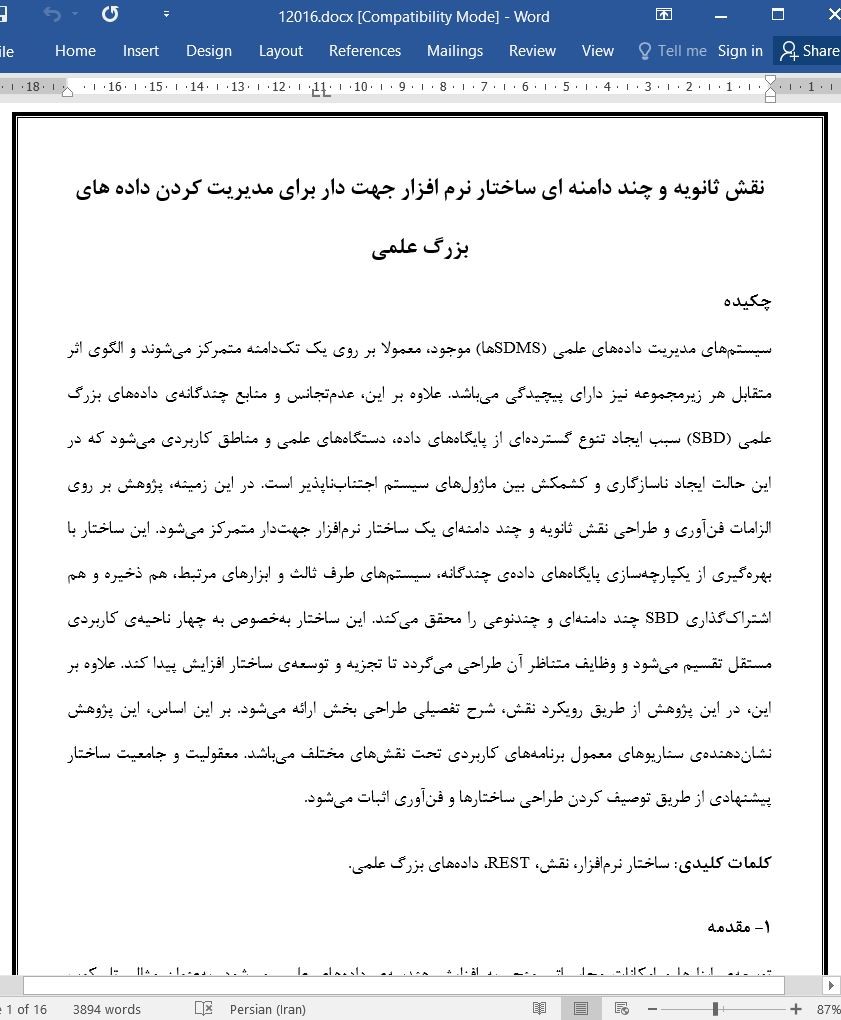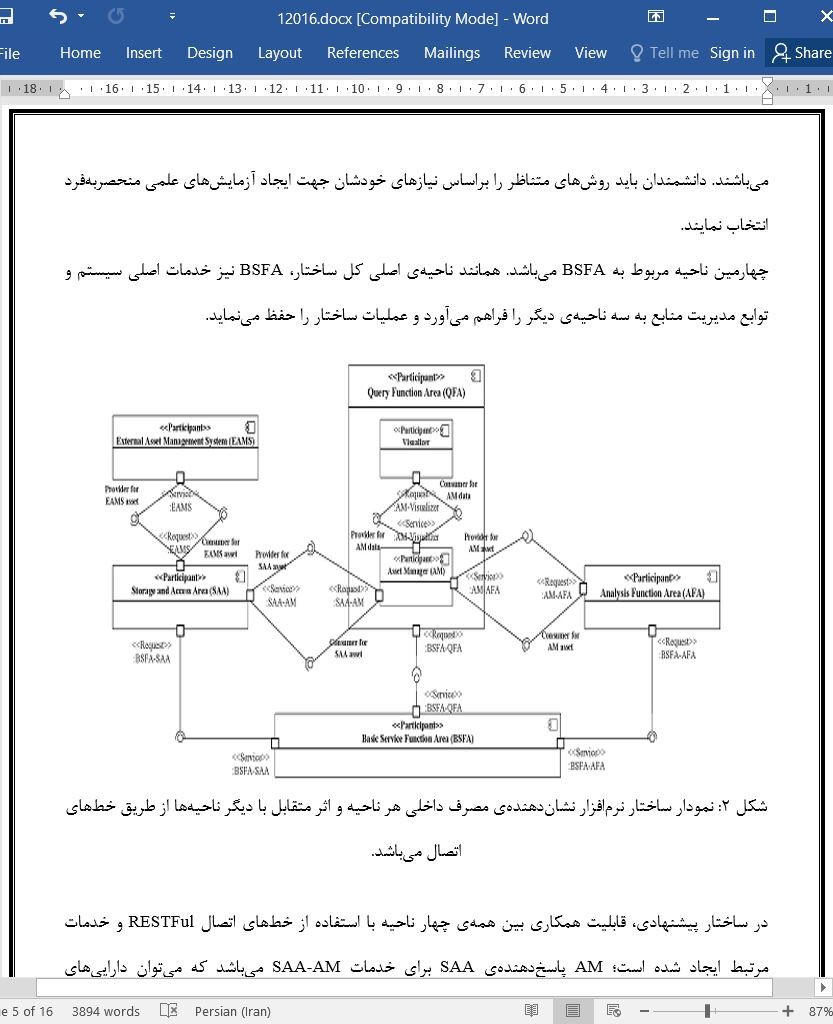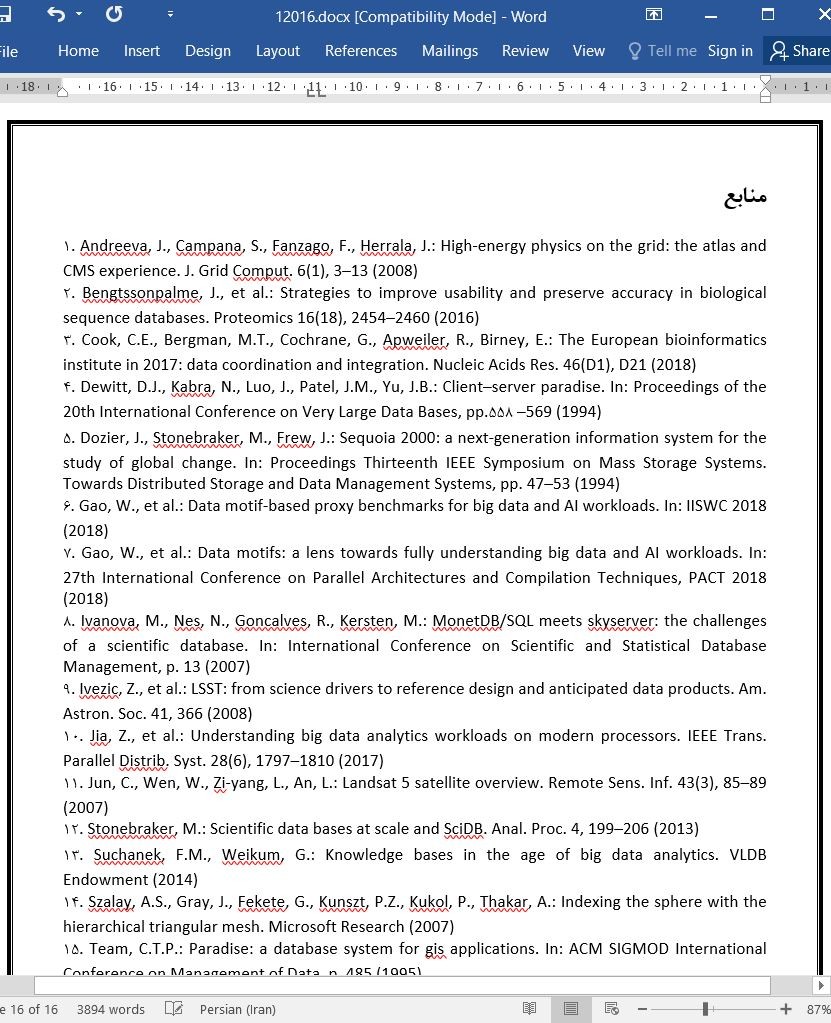
دانلود مقاله نقش ثانویه و چند دامنه ای ساختار نرم افزار جهت دار برای مدیریت کردن داده های بزرگ علمی
چکیده
سیستمهای مدیریت دادههای علمی (SDMSها) موجود، معمولا بر روی یک تکدامنه متمرکز میشوند و الگوی اثر متقابل هر زیرمجموعه نیز دارای پیچیدگی میباشد. علاوه بر این، عدمتجانس و منابع چندگانهی دادههای بزرگ علمی (SBD) سبب ایجاد تنوع گستردهای از پایگاههای داده، دستگاههای علمی و مناطق کاربردی میشود که در این حالت ایجاد ناسازگاری و کشمکش بین ماژولهای سیستم اجتنابناپذیر است. در این زمینه، پژوهش بر روی الزامات فنآوری و طراحی نقش ثانویه و چند دامنهای یک ساختار نرمافزار جهتدار متمرکز میشود. این ساختار با بهرهگیری از یکپارچهسازی پایگاههای دادهی چندگانه، سیستمهای طرف ثالث و ابزارهای مرتبط، هم ذخیره و هم اشتراکگذاری SBD چند دامنهای و چندنوعی را محقق میکند. این ساختار بهخصوص به چهار ناحیهی کاربردی مستقل تقسیم میشود و وظایف متناظر آن طراحی میگردد تا تجزیه و توسعهی ساختار افزایش پیدا کند. علاوه بر این، در این پژوهش از طریق رویکرد نقش، شرح تفصیلی طراحی بخش ارائه میشود. بر این اساس، این پژوهش نشاندهندهی سناریوهای معمول برنامههای کاربردی تحت نقشهای مختلف میباشد. معقولیت و جامعیت ساختار پیشنهادی از طریق توصیف کردن طراحی ساختارها و فنآوری اثبات میشود.
1- مقدمه
توسعهی ابزارها و امکانات محاسباتی منجر به افزایش هندسهی دادههای علمی میشود، بهعنوان مثال، تلسکوپ تحقیقاتی بزرگ سینوپتیک (LSST) در زمینهی ستارهشناسی در هر شب، 15–30 TB دادهی خام تولید مینماید ]9[؛ برخورددهندهی هادرونی بزرگ (LHC) در زمینهی فیزیک ذره در هر سال، 40 PB دادهی آزمایشگاهی تولید میکنند ]1[. روند مشابهی در علوم زیستی ]3[، علوم مربوط به زمین ]11[، بیولوژی ]2[ و موارد دیگر نیز مشاهده شده است. در عین حال بهدلیل پیچیدگی آزمایشهای علمی، SBD اغلب ویژگیهایی با ابعاد بالا و ساختار پیچیده را ارائه میدهد.
6- نتیجهگیری
این پژوهش یک مدل ساختار نرمافزاری را جهت مدیریت چند دامنهای و عدمتجانس SBD ارائه میدهد. ذخیرهی داراییها، تحلیل، تجسم و دسترسی به سیستمهای خارجی از طریق خدمات مختلف که بهوسیلهی خطهای اتصال RESTFul پیادهسازی میشوند، در درون یک ساختار تجمیع میشوند. علاوه بر این، این پژوهش از طریق رویکرد نقش، طراحی ساختار را ایجاد مینماید و درکی عمیقتر در مورد ساختار را در آینده بهوجود میآورد.
Abstract
The existing Scientific Data Management Systems (SDMSs) usually focus on a single domain and the interaction pattern of each subsystem is complex. What’s more, the heterogeneity and multi-source of Scientific Big Data (SBD), resulting in a wide variety of databases, scientific devices and functional areas, make the incompatibility and conflict between system modules inevitable. In this context, the paper focuses on the design and technology requirements of a multi-domain and sub-role oriented software architecture. Through integrating multiple databases, third-party systems and related tools, this architecture realizes both the storage and the sharing of multi-domain and multi-type SBD. Particularly, this architecture is divided into four independent functional areas and corresponding roles are designed, which enhances the decoupling and extensibility of the architecture. In addition, this paper has a formal description of the partition design from the perspective of role. On this basis, this paper also shows the typical application scenarios under different roles. The rationality and comprehensiveness of the proposed architecture are proved by describing the architectures design and technology.
1 Introduction
The development of instruments and computing facilities leads to the geometric increase of scientific data, for example, the Large Synoptic Survey Telescope (LSST) in the field of astronomy generates 15–30 TB raw data every night [9]; the Large Hadron Collider (LHC) in the field of high energy physics generates 40PB of experimental data each year [1]. Similar trends have also been observed in life sciences [3], earth sciences [11], biology [2], and so on. At the same time, due to the complexity of scientific experiments, SBD often presents the characteristics of high dimension and complex structure.
6 Conclusion
This paper proposes a software architecture model to manage multi-domain and heterogeneous SBD. Asset storage, analysis, visualization, and external systems access are integrated into one architecture through different services which are implemented by RESTFul interfaces. In addition, this paper formalizes the design of the architecture from the perspective of role to have a deeper understanding of the architecture in the future.
چکیده
1- مقدمه
2- ساختار سیستم مدیریت دادههای بزرگ علمی
3- شرح تفصیلی ساختار
3-1 دارایی
3-2 مؤلفه
3-3 خط اتصال
3-4 وظیفه
3-5 ساختار
4- گسترش ساختار برای پیادهسازی طراحی
5-1 انجام آزمایشهای علمی بهوسیلهی دانشمندان
5-2 تشخیص کیفیت دادهها بهوسیلهی مالک دارایی
5-3 فراهم کردن خدمات سیستم بهوسیلهی عملگرهای سیستم
5-4 مدیر برتر برای توسعهدهندگان سیستم
6- نتیجهگیری
منابع
Abstract
1 Introduction
2 Architecture of Scientific Big Data Management System
3 Formal Description of Architecture
3.1 Asset
3.2 Component
3.3 Interface
3.4 Role
3.5 Architecture
4 Deployment Architecture as an Implementation of Design
5 Architecture Application Scenario
5.1 Conducting Scientific Experiments by Scientists
5.2 Data Quality Detection by Asset Owner
5.3 Providing System Services by System Operators
5.4 Super Administrator for System Developers
6 Conclusion
References
- اصل مقاله انگلیسی با فرمت ورد (word) با قابلیت ویرایش
- ترجمه فارسی مقاله با فرمت ورد (word) با قابلیت ویرایش، بدون آرم سایت ای ترجمه
- ترجمه فارسی مقاله با فرمت pdf، بدون آرم سایت ای ترجمه



